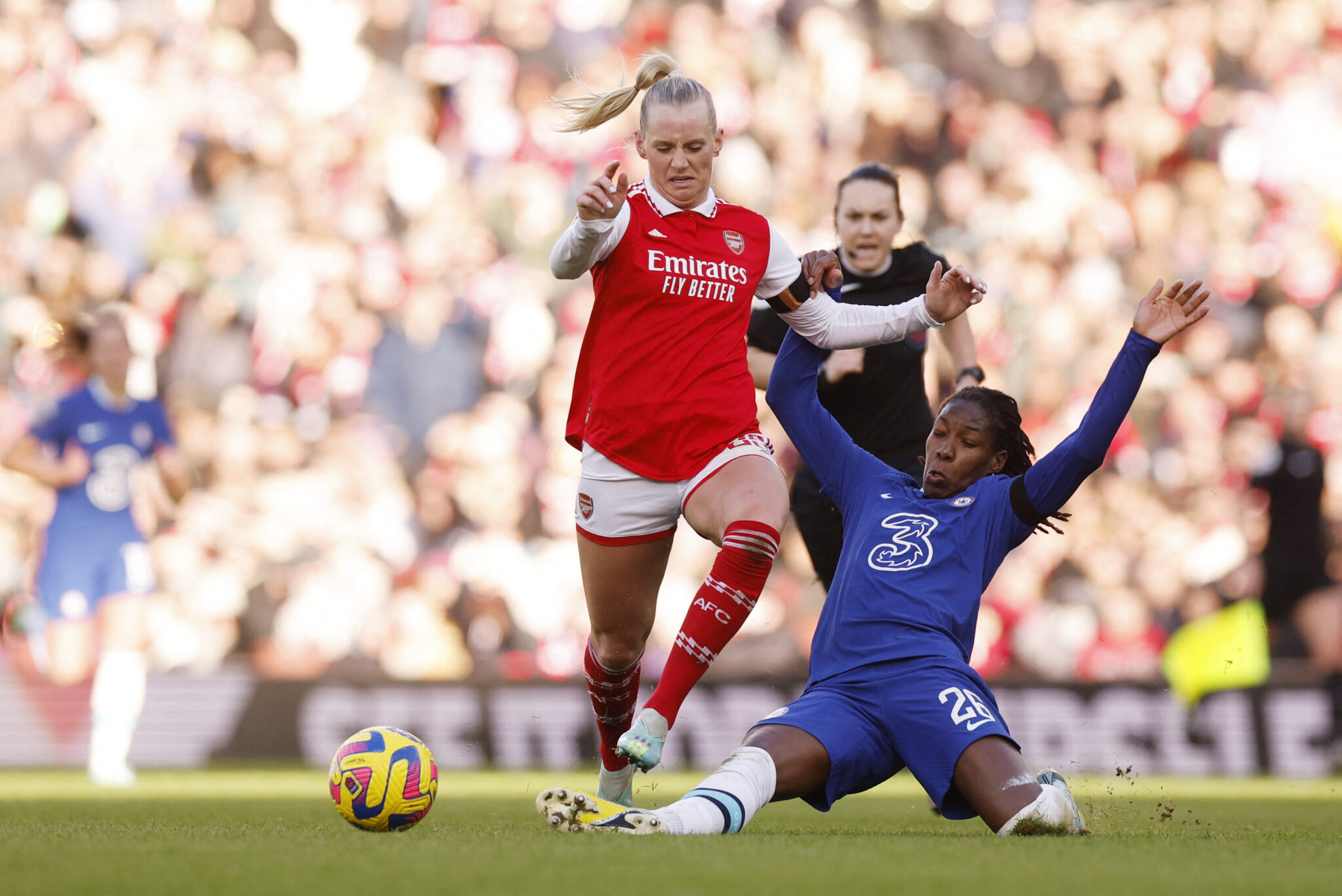© The Fan Experience Company 2023

Arsenal have captured an audience for WSL games at Emirates
As the Women’s Super League match between Arsenal and Chelsea kicked off on Sunday afternoon, the outside of the Emirates was packed with fans waiting to get in.
Questions still need to be asked regarding WSL scheduling, but it is unprecedented in the women’s domestic game to see such demand consistently.
A bounce in interest was expected after England’s success at the European Championship – interestingly, a trio associated with Arsenal (head coach Jonas Eidevall, Alex Scott and Ian Wright) was part of the BBC’s final coverage. That bounce duly arrived with Arsenal setting the WSL attendance record (47,367) in September against Tottenham Hotspur. Interest has not waned since.
For each of the past three WSL games held at the Emirates, more than 40,000 people have turned up. Although at times the atmosphere felt flat, Arsenal have developed an audience that wants to return. They are the only women’s club in the world for the first half of this season who consistently attract those sorts of numbers for league games at the men’s stadium.
Arsenal’s plan has been to integrate the women’s side into everything they do — from a joint announcement when Eidevall and Mikel Arteta signed contract extensions to the gender-neutral pre-match Stella McCartney kit range.
Even before the Euros, Arsenal committed to hosting six games at the men’s stadium, a declaration not made by any other WSL side. They are reaping the rewards. Games against Tottenham, Manchester United and Chelsea have left spectators wanting more.
This new audience wants to find a WSL team to support and celebrate women’s football. The club have taken this opportunity to convert these new followers of the game into Arsenal fans, but to do so they needed to make the initial experience so special that they want to come back.
The club have invested in the matchday experience: Dat Brass, a brass band, can be heard from Highbury and Islington station; buskers fill the stadium; face painters weave in and out engaging families; children from the local community wave flags while forming a guard of honour as the players walk out.
Elements of the Euros, such as Freed From Desire being played when Arsenal score — which they did against Chelsea in a 1-1 draw — have also been integrated, creating a sense of familiarity for newcomers. In time, they might make the Emirates a place that the opposition fear.
“My hope is that we can start playing better with the crowd,” said Eidevall. “The more we experience it, the more we can turn this into our fortress. We need to create that bond together (with the fans) to make the Emirates as difficult as possible for opposing teams.”
“It’s not easy for us coming into Arsenal’s home stadium,” Chelsea defender Kadeisha Buchanan said after her first time playing at the Emirates. “You feel like a true footballer when the crowd is sold out and the pitch is nice.”
As good as Borehamwood — the women’s team’s alternative home — has been to them, the matchday engagement, location and facilities are incomparable to the Emirates. Previously, the cost of putting on women’s games at the men’s ground outweighed the revenue. The club are gradually building a sustainable audience model, though Champions League midweek games have not seen such a high turnout.
But even with the clash of the men’s north London derby on the same day — a conversation for another time — Sunday’s attendance (46,811 tickets sold; an attendance figure was not released) stood as evidence that the Emirates should be the permanent home of Arsenal men and women. That is the club’s long-term ambition.
“The Emirates feels like our home ground,” said Arsenal captain Leah Williamson. “It doesn’t feel any different. In my lifetime, did I ever think I would say that? Probably not.
“You can feel the atmosphere. It’s a proper football game. It takes investment.”
“You just feel closer to the club, more engaged with the fans,” added Arsenal forward Caitlin Foord.
The club has made a concerted effort to better understand fans.
Around the concourse, for example, surveys (with a chance to win a matchday box experience) are given to supporters, asking where they travelled from, how they found out about the club and how they wish to be kept informed. This turns single-match goers into multiple-match goers.
Women’s audiences tend to get missed in a cluttered sporting space so, as simple as it sounds, clear, advanced communication of when and where fixtures will be played means people can plan accordingly.
Before the game, even Chelsea manager Emma Hayes praised Arsenal’s achievement for consistently packing out the Emirates, describing the club as “an inspiration for the rest of the league”.
“We probably need to spend less time talking about it being big games, big stadiums, big crowds. Instead, we should (move the conversation towards) how we turn 40,000 to 60,000-plus.”
The issue is just 10 per cent of those who attended the Emirates can fit into the 4,500-capacity stadium at Borehamwood. The club’s long-term strategy, however, is positive for Arsenal, the WSL and women’s football globally. This should be the norm for the WSL. Other teams need to follow suit.
Original article published 16.01.2023 on The Athletic website. Written by Charlotte Harpur.
To view the full article, click here
